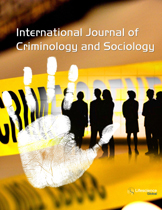ijcs
Abstract : The Social Roots of Contemporary Prejudice
|
|
Abstract: Background: Evolutionary theory suggests prejudice may be a result of the evolution of human sociality. In this study, we investigate this claim by integrating theoretical insights of evolutionary theory with the well-established social psychological research on prejudice centering on Right Wing Authoritarianism (RWA) and Social Dominance Orientation (SDO) as the main predictors of prejudice. Method: First, we developed two different signaling scales, probing respondents’ propensity to signal group commitment in a genuine or deceptive way. We administered a questionnaire consisting of the two signaling measures, RWA, SDO and prejudice measures to 1380 students. Analysis of the data was done using structural equation modeling. Results: Our results indicate that genuine signaling of one’s commitment to the in-group is positively associated with RWA, and that deceptively signaling one’s commitment to the in-group is positively associated with SDO. Both RWA and SDO are positively related to prejudice. Conclusion: Our study is the first to empirically reveal the pro-social roots of prejudice using classical measurement instruments. The findings give rise to a new array of research questions. Keywords: Prejudice, right wing authoritarianism, social dominance orientation, evolutionary theory.Download Full Article |
Abstract : A Multidisciplinary Attempt at Understanding the Violence in Mexico
|
|
Abstract: Mexico has been living with a level of violence that was unimaginable only a short time ago. Why and how has Mexico arrived at this dramatic increase in violence? The goal of this study is to reflect on this question through several disciplines. The idea is to collect and contrast sufficient information from the most varied fields of knowledge, including culture and art, as well as social sciences. This is done with the ambition that all these factors will help us to understand the reasons for this terrible and complex Mexican reality. Keywords: Mexico, Organized crime, violence, complexity theory, culture.Download Full Article |
Abstract : A Multilevel Analysis of Registered Sex Offender Violation Status: The Role of Neighborhood Disadvantage and Social Services
|
|
Abstract: This research attempted to clarify the determinants of registered sex offender violations using individual-level and contextual characteristics under social disorganization theory. Data on registered sex offenders in Fresno County, CA and census data were analyzed to examine the influences of offender characteristics, neighborhood disadvantage, and accessibility to social services on violation risks. Multilevel logistic regression models indicated that those offenders living in disadvantaged neighborhoods faced a higher risk of registration violations, while such an effect was mitigated by the accessibility to social services. Based on the findings, policy implications of social services as a protective factor and strategic management of the registration policies were discussed. Keywords: Registered sex offenders, neighborhoods, spatial analysis.Download Full Article |
Abstract : An Evidence Based Study of the Different Factors that Influence the Formation of Hammer Transfer Stains in a Crime Scene
|
|
Abstract: Weapon transfer stains in a crime scene are often difficult to interpret. Given the large number of hammer hit events that take place each year, this work is largely aimed at analyzing the different factors that influence and distort regular hammer transfer stains. Different physical mechanisms under identical conditions influence the formation of distinct transfer stain patterns. This is the basic highlight of this study. By experimentation, the authors are of the view that the quantity of blood attached to the surface area of a hammer, the surface area of the hammer exposed to blood, the dimensions of the hammer, the angle of inclination at the time of fall, hardness of the target surface, friction coefficient of the hammer material, texture of the target surface influence the transfer stain formed. Again the velocity of hit, the undulations in the hammer, the depth of blood pool, hammer weight all have significant effect on the transfer stain pattern formed. The significance of the height of fall and the edge that touches the target surface first, cannot be particularly ruled out in analyzing hammer transfer stain patterns. The relevance of the article lies in the fact that analysts having clear idea of how these different factors could affect the formation of different weapon transfer stain patterns, shall be in a better position at understanding the probable mechanism that might have led to the formation of the stain. This knowledge is transferable to the study of other murder weapon transfer stain interpretation and shall aid proper sequencing of segments in a criminal event. Keywords: Murder weapon, transfer stain, bloodstain pattern, hammer, head hit, free fall.Download Full Article |






























